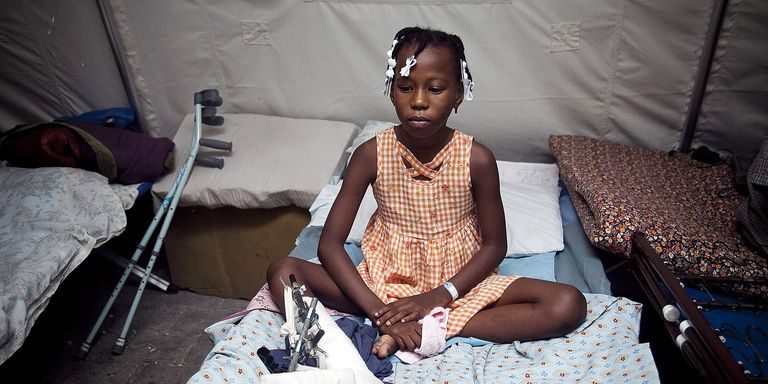The 2010 Earthquake Caused Lasting Damage
A 7.3 magnitude earthquake ravaged Haiti on January 12, 2010. More than 230,000 people were killed. Another 300,000 were injured. More than 600,000 people left Port-au-Prince to stay with families outside the capital. The quake displaced 1.5 million people who initially lived in camps. Combined, that’s roughly 20 percent of the nation’s population. (Source: “Haiti Earthquake Fast Facts,” CNN)
Damage
The earthquake created between $7.8 billion to $8.5 billion in damage.
Haiti’s gross domestic product shrank 5.1%. The quake damaged the main airport, most of the ports and nearly all the paved roads. It destroyed 106,000 homes and damaged another 188,383 houses.
(Source: “Inter-American Development Bank.”)
The quake hit Port-au-Prince, Haiti’s capital. This crippled government efforts to restore order. One out of four civil servants living in the capital were killed. Sixty percent of the city’s government buildings
were destroyed or damaged. So were and 80 percent of the city’s schools, (Source: “Haiti Earthquake Facts and Figures,” Disasters Emergency Committee.)
Even before the quake, Haiti was the poorest country in the Western Hemisphere. Eighty percent of the population lived below the poverty line. Fifty-four percent of the population lived in abject poverty.
That’s partly because two-fifths of all Haitians are subsistence farmers. Haiti is especially vulnerable to damage from natural disasters because of deforestation
Haitians who live abroad, and send money back, contribute one-fifth of GDP. That’s five times greater than the total value of exports in 2012.
Effects on Haiti’s Economy
The earthquake struck just as Haiti’s economy was just starting to grow again. The U.S. Congress had just approved a hugely beneficial trade agreement.
The Haitian Hemispheric Opportunity Through Partnership Encouragement Act was signed in 2006. The agreement boosted Haiti’s apparel industry by allowing duty-free exports to the United States.
By 2009, Haiti was the 17th-largest apparel supplier to the United States. Exports had reached $424 million, according to the American Apparel and Footwear Association. Apparel made up more than 90 percent
of Haiti’s exports to America. (Source: United Nations, January 2009.)
In 2010, the U.S. Congress extended the Caribbean Basin Trade Preference Agreement. It extended HOPE II until 2020 under the Haiti Economic Lift Program Act. Countries cancelled any debt owed to them by Haiti.
The Haiti earthquake inspired massive donations to help relief efforts. Most of these donations were made via credit cards. Normally, credit cards charge a 1-3 percent fee for their use.
These fees, known as interchange, generate $45 billion a year in revenue for the companies. Capital One, Visa, MasterCard, American Express and Discover waived fees for donations to relief efforts.
Usually, credit card companies make around $250 million a year from charitable donations. These fees cover transaction costs, and are charged for all credit card use.
Only Capital One waived fees for all charitable donations made through their credit cards.
By 2011, Haiti’s economy was starting to recover when two hurricanes hit. By 2014, GDP was $18.3 billion, and grew just 2.3 percent. That’s better than the $12 billion produced in 2008.
(Source: “Haiti,” CIA WorldFactbook.)
Effect on U.S. Economy
The Haiti earthquake didn’t impact the U.S. economy much. That’s because Haiti’s economy is only one-tenth that of the United States.
What Caused the Earthquake?
Haiti sits above two tectonic plates, the Caribbean plate and the North American plate. These plates are rigid parts of the Earth’s crust that slide separately on our planet’s molten core. They were sliding past each other. When the two jagged edges catch, they hold at first. The mounting pressure eventually forces them to grind past each other.
That’s what causes an earthquake.
The 7.0 quake that struck Haiti is the same strength as the 1989 Loma Prieta earthquake that struck San Francisco during the World Series. However, Haiti’s quake was 6.2 miles below the surface. It was also just ten miles from the capital of Port-au-Prince. The quake’s closeness made its impact much stronger. (Source: “What Caused Haiti’s Earthquake?,” Live Science, January 13, 2010.)
Sourced from The Balance







